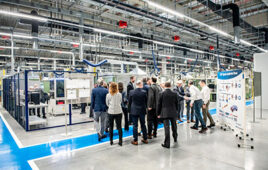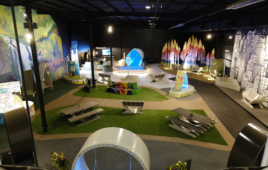
Today, carbon dioxide levels are at an all-time high — with CO2 being the primary contributing gas to GHG emissions-caused climate change. The United Nations Intergovernmental Panel on Climate Change has warned that global warming will reach 1.5° C by 2040 and, in order to avoid dangerous climate change, we need to limit it to well below 2° C.
In Canada, the current picture is bleak. The country has committed to reducing its GHG emissions by 30% by 2030 as per the Paris Climate Agreement. But at its current pace of reduction, it won’t meet that target until 2209. Undeniably, urgent action is required by governments, businesses and individuals to keep global warming levels to a minimum and avoid climate catastrophe.
Built during a time where sustainability was not a consideration, many buildings consume a significant amount of energy. In the U.S., 39% of primary energy use comes from buildings, and they account for 72% of all electricity consumed domestically. Globally, buildings account for 41% of energy consumption — with the next biggest sector (industrial) making up 30%. A building’s lighting system, heating and cooling system and plug load use all contribute to this energy consumption, which in turn contributes to the release of GHG emissions into the atmosphere.
SES Consulting is a Vancouver-based mechanical engineering company and social enterprise on a mission to build a more sustainable future by reducing greenhouse gas emissions in existing buildings.
Increasing energy efficiency in buildings is a great way to reduce climate change-causing emissions, and arguably the solution that provides the most “bang for your buck.” Making buildings more energy efficient can provide a return on investment in the form of energy cost savings in as little as six to 12 months. Investing in energy-saving in other sectors, such as transport or agriculture, can be considerably more expensive.
The target of reducing GHG emissions encompasses a wide range of strategies and a multitude of benefits. These include reducing overall energy use in buildings, making them more efficient, converting buildings to a cleaner energy source, and using heat recovery technology to make use of heat that would otherwise be ejected from the building.
Typically, buildings can save at least 20% of energy consumption from implementing standard energy efficiency measures such as equipment and lighting scheduling, building automation and others. A number of buildings have saved more than 80-90% of gas consumption through building retrofits recommended by SES.
SES’ goal is to help clients collectively save 1 million tonnes of GHGs.
Tackling global warming through reducing GHG emissions at the rate that SES is achieving is no easy feat. However, climate change requires drastic and ambitious goals, which is exactly what the company has understood and built into the fabric of its mission. In addition to the reduction of GHGs, the company also prioritizes employee happiness, its contribution to clean capitalism, and creating local, green jobs in the industry
SES Consulting
sesconsulting.com
Filed Under: Green engineering • renewable energy • sustainability




